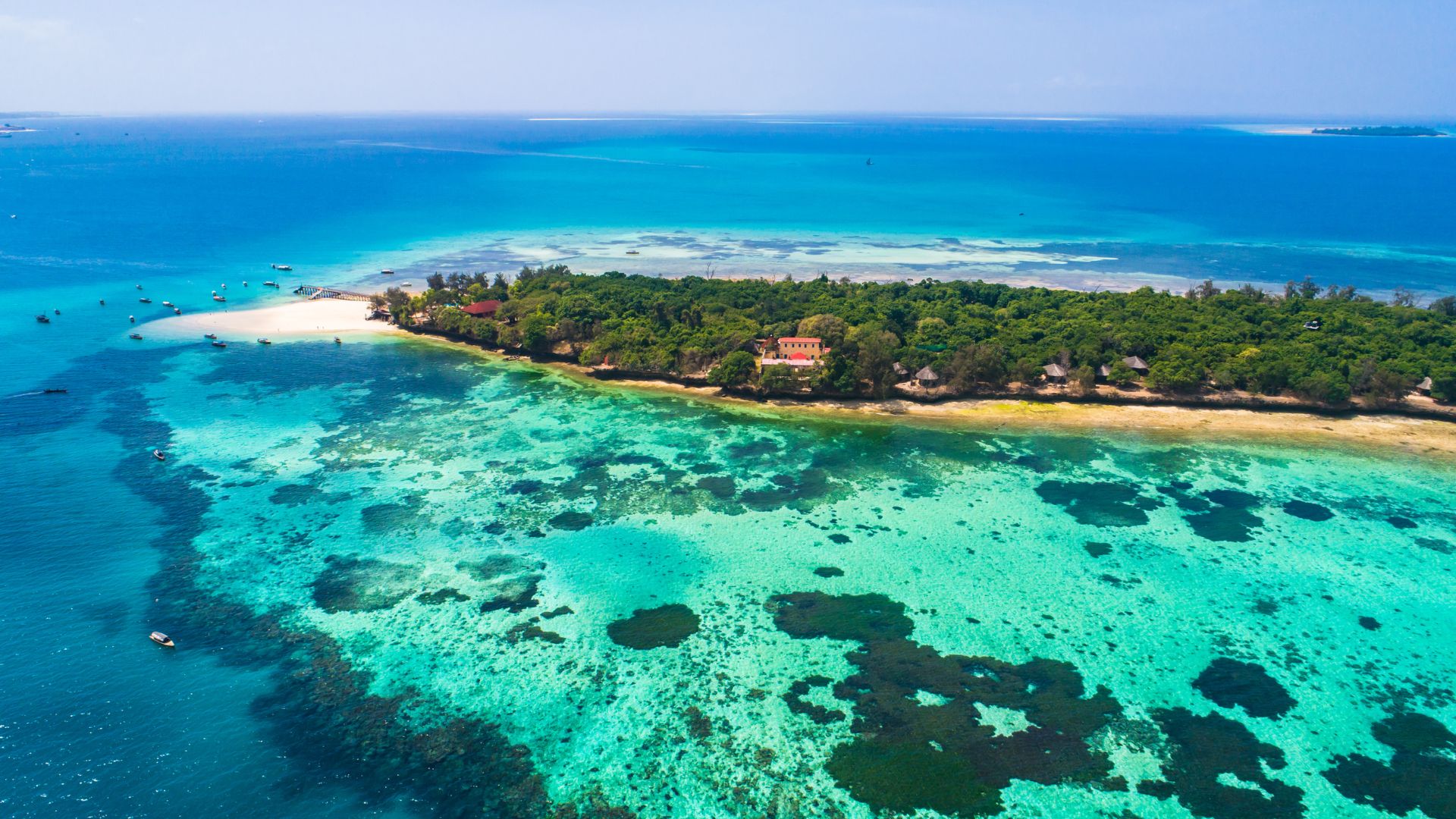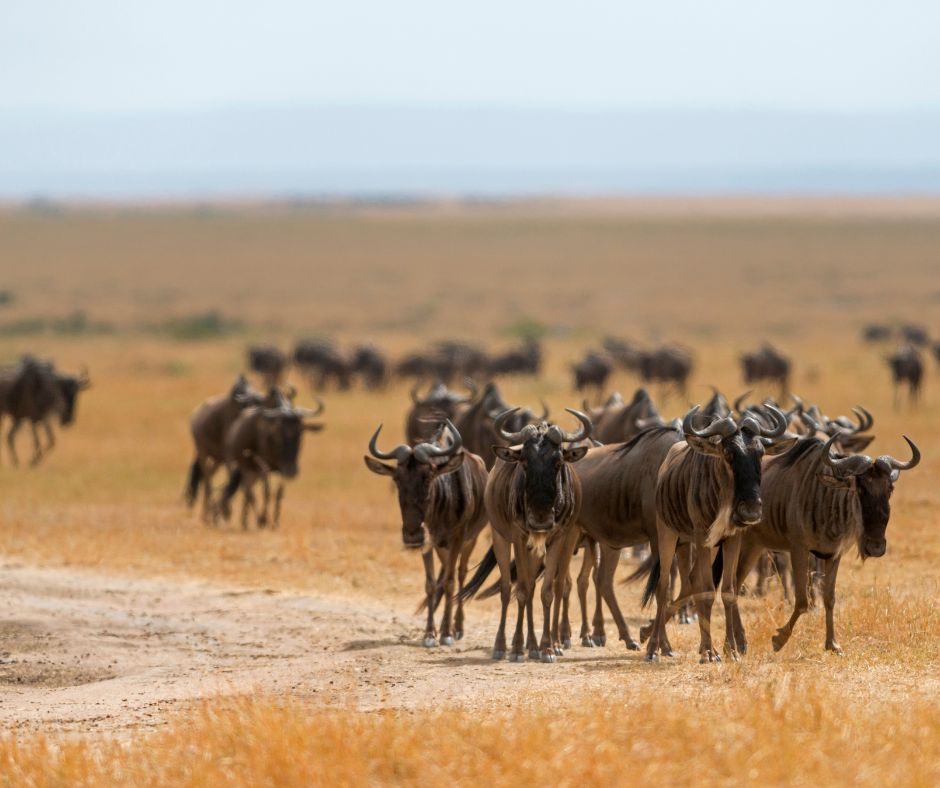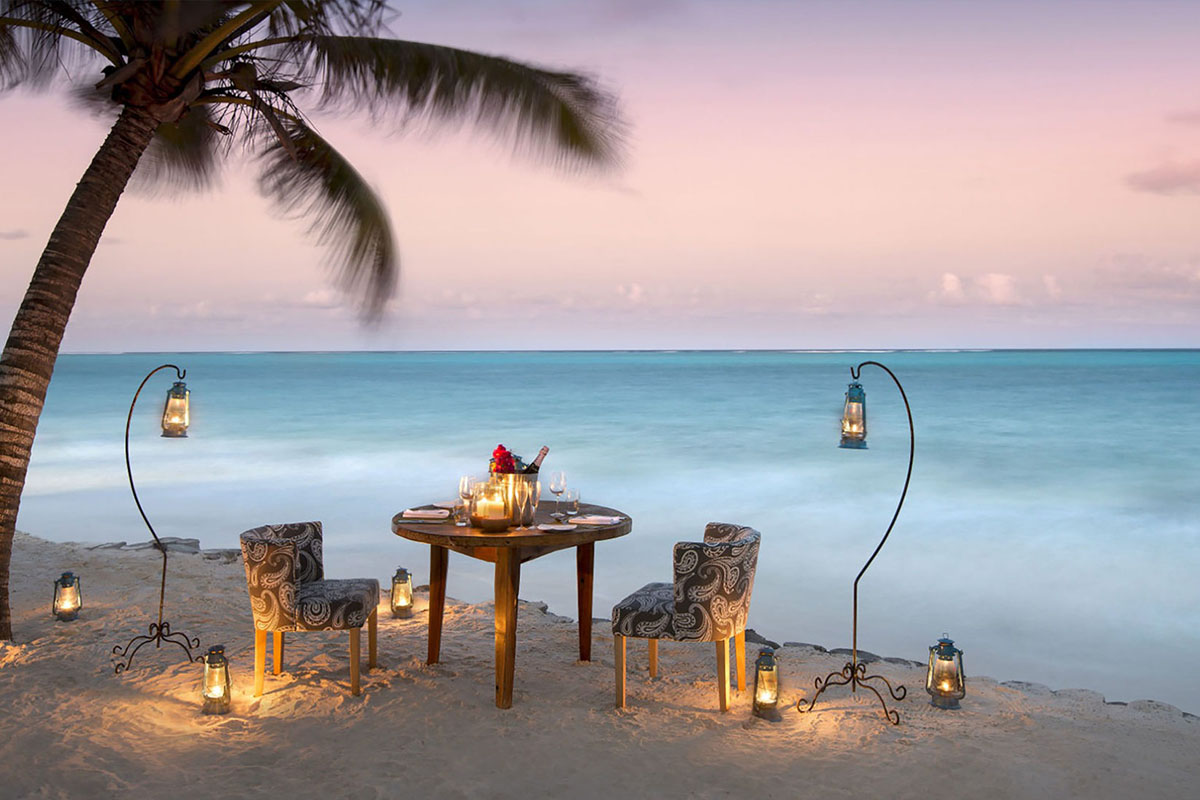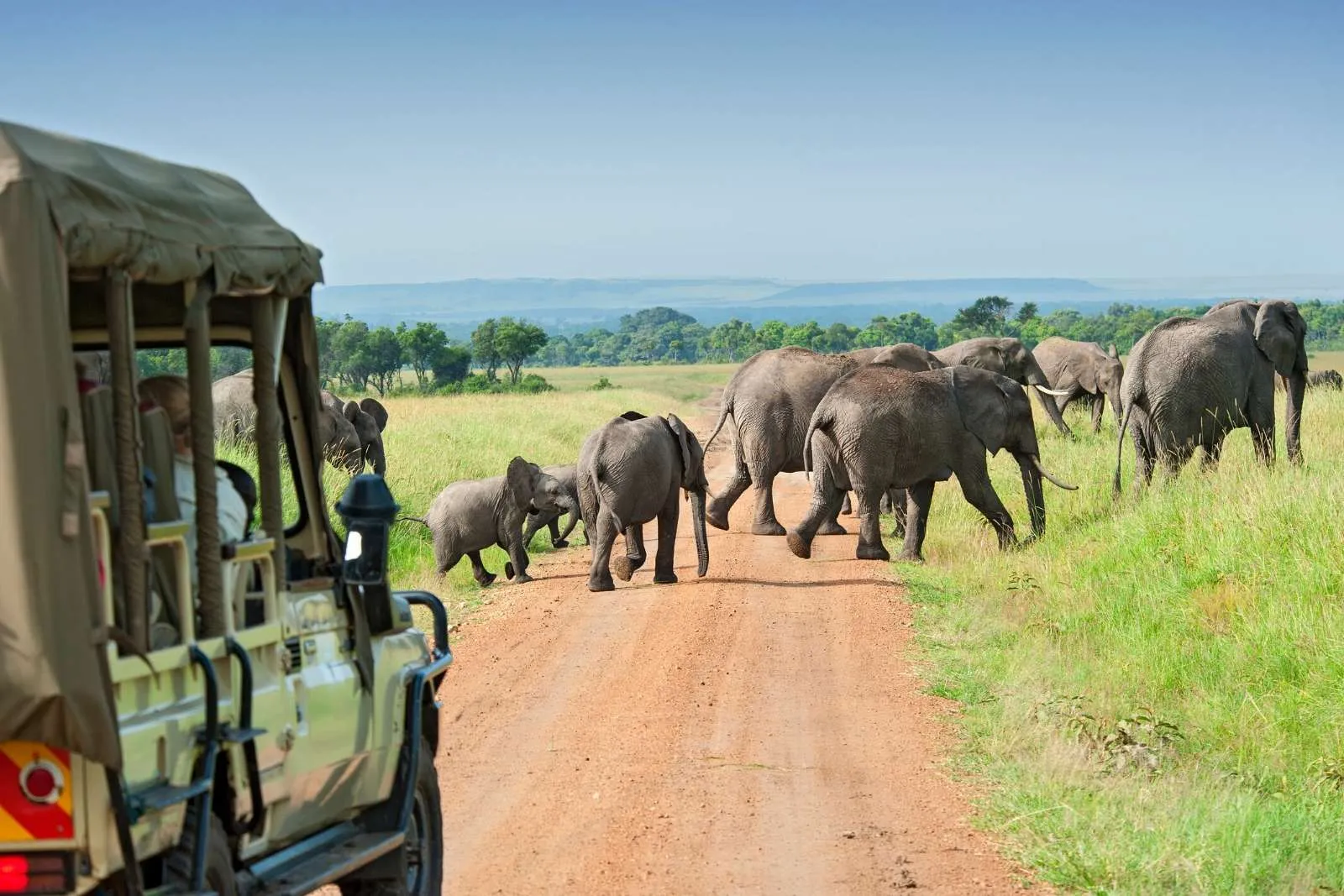Zanzibar is an enchanting archipelago off the coast of Tanzania, known for its beautiful beaches, rich cultural heritage, and historical significance. This tropical paradise consists of several islands, with the two main islands being Unguja (commonly referred to as Zanzibar Island) and Pemba Island, along with many smaller islands. Zanzibar offers a unique combination of idyllic beaches, spice plantations, and a vibrant mix of Swahili, Arabic, and European influences, making it a must-visit destination for travelers seeking both relaxation and cultural exploration.
Location and Size
- Location: Zanzibar is located in the Indian Ocean, about 25–50 kilometers (16–31 miles) off the east coast of mainland Tanzania. It lies just south of the equator, making it a year-round tropical destination.
- Size: Zanzibar Island (Unguja) is the largest island, covering approximately 1,654 square kilometers (639 square miles). Pemba Island is smaller but known for its lush landscapes and diving opportunities. Together, the archipelago spans about 2,400 square kilometers (926 square miles).
History and Establishment
- Historical Significance: Zanzibar has a fascinating history that dates back to ancient times. It was a major center for the East African slave trade and spice production, and its capital, Stone Town, is a UNESCO World Heritage site.
- Arab and European Influence: Zanzibar’s location along ancient trade routes made it a melting pot of cultures. Arab traders brought Islam to the region, and the Portuguese and later the British influenced its politics and economy. The island played an important role as a hub for the spice trade, particularly in cloves, nutmeg, and cinnamon.
- Independence: Zanzibar gained independence from British rule in 1963 and later merged with Tanganyika in 1964 to form the modern nation of Tanzania.
Landscape and Terrain
- Topography: Zanzibar’s landscape is diverse, featuring stunning beaches with white sands, lush tropical forests, spice plantations, and rocky outcrops. The islands have a generally flat topography, with some areas having rolling hills and coral reefs off the coast.
- Beaches: Zanzibar is known for its pristine beaches, particularly those on the east coast, such as Paje, Jambiani, and Nungwi. These beaches boast powdery white sands, crystal-clear waters, and vibrant coral reefs, making it a top destination for beach lovers and water sports enthusiasts.
- Spice Plantations: Zanzibar is famous for its spice plantations, which produce cloves, cinnamon, cardamom, and nutmeg. The spice farms around Kidichi and Kizimbani offer guided tours where visitors can learn about the cultivation and use of these spices.
Wildlife
While Zanzibar is not as famous for wildlife as mainland Tanzania, it still offers a variety of unique species and marine life:
- Marine Life: Zanzibar is home to abundant marine life, including dolphins, sea turtles, and vibrant coral reefs, making it a prime destination for diving and snorkeling. Popular spots include the reefs off the coast of Mnemba Atoll and Tumbatu Island.
- Birdlife: Zanzibar is a birdwatcher’s paradise, with species like the Zanzibar red banana bat and the white-fronted plover. The island’s forests and wetlands attract migratory birds and endemic species.
- Jozani Forest: This forest is home to the endangered Zanzibar red colobus monkey, one of the few places in the world where you can observe this rare species in the wild.
Attractions
- Stone Town: Zanzibar’s capital, Stone Town, is a maze of narrow alleys, vibrant markets, and historic buildings. The architecture is a blend of Arab, Persian, Indian, and European styles, with notable landmarks like the House of Wonders, Forodhani Gardens, and the Sultan’s Palace. A visit to Stone Town is a journey through the island’s past.
- Spice Tour: A tour of Zanzibar’s spice plantations is a must-do activity, where you can explore fragrant farms and learn how local spices are grown, harvested, and processed. Many tours include tastings and the opportunity to buy fresh spices.
- Prison Island (Changuu Island): Located a short boat ride from Stone Town, Prison Island is known for its giant tortoises, which were brought to the island in the 19th century. The island also has historical significance, having once served as a quarantine station for slaves.
- The Rock Restaurant: This iconic restaurant sits on a rock in the Indian Ocean, just off the coast of Bwejuu beach, offering a truly unique dining experience with breathtaking ocean views.
- Jozani Chwaka Bay National Park: The Jozani Forest is a lush, tropical rainforest and the last remaining area of coastal forest on Zanzibar. It’s home to various endemic species, including the red colobus monkey, and offers walking tours through the park’s natural beauty.
Activities
- Diving and Snorkeling: Zanzibar offers excellent opportunities for water sports, including diving, snorkeling, and kitesurfing. The clear, warm waters around the island are teeming with marine life, including coral reefs, fish, and sea turtles.
- Spice Tours: Explore the spice plantations and learn about the island’s history as a major spice producer. Visitors can sample fresh spices, witness the cultivation process, and enjoy a meal of freshly prepared dishes using local spices.
- Cultural Tours: Discover Zanzibar’s rich cultural heritage through walking tours of Stone Town, which is a UNESCO World Heritage site. You can visit local markets, historic mosques, and experience the Swahili culture.
- Wildlife Watching: Visit the Jozani Forest for an opportunity to see the endangered red colobus monkey and enjoy the park’s rich biodiversity.
Accommodation
Zanzibar offers a range of accommodation options, from luxury resorts to budget-friendly guesthouses:
- Luxury Resorts: High-end resorts like Zanzibar White Sand Luxury Villas & Spa, The Palms Zanzibar, and Baraza Resort & Spa offer luxury experiences with private villas, spas, and exclusive beachfront access.
- Mid-Range Hotels: There are also mid-range options like Tulia Zanzibar and Zanzibar Serena Hotel which offer a blend of comfort, luxury, and local culture.
- Budget Hotels and Guesthouses: For those traveling on a budget, Zanzibar offers a variety of affordable guesthouses and hotels, particularly in Stone Town and along the beaches.
How to Get There
- By Air: Zanzibar is served by Zanzibar International Airport, located about 6 kilometers south of Stone Town. There are direct flights to Zanzibar from Dar es Salaam, Nairobi, and other major cities in East Africa. International flights also land in Zanzibar from Europe and the Middle East.
- By Sea: Ferries connect Zanzibar with Dar es Salaam on the mainland, making it accessible by boat. The ferry ride takes about 2 hours and offers beautiful views of the Indian Ocean.
Best Time to Visit
- Dry Season (June to October): The best time to visit Zanzibar is during the dry season when the weather is sunny and pleasant, perfect for beach activities and exploring the island. This period is also ideal for diving and snorkeling.
- Rainy Season (March to May): The rainy season sees heavy downpours, but the island is quieter and more affordable. Some resorts may close, but it’s a good time for those looking for fewer crowds.
Conservation and Challenges
Zanzibar faces challenges related to overdevelopment, marine pollution, and habitat loss. However, efforts are being made to protect the island’s unique environment through conservation initiatives aimed at safeguarding marine life and the red colobus monkeys. Sustainable tourism is being encouraged to ensure that the island’s beauty remains intact for future generations.
Conclusion
Zanzibar is a magical destination offering a perfect blend of history, culture, natural beauty, and adventure. Whether you’re exploring the maze-like streets of Stone Town, lounging on the beach, diving in crystal-clear waters, or learning about the island’s spice trade, Zanzibar provides an unforgettable experience. It’s a place where relaxation and cultural discovery come together, making it an ideal destination for travelers seeking a tropical escape with a rich cultural backdrop.








